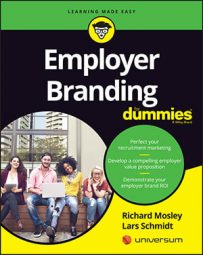Exploring ways to use video in recruitment marketing
Today most companies rely on employer brand videos as the focal point of their employer branding efforts. These videos are usually highly produced montages of employees, testimonials, and campus shots designed to give viewers a look inside the culture of the organization. Here are a few more creative ways to implement video in your recruitment marketing.Job descriptions
Job descriptions are often the least interesting component of a recruitment marketing portfolio, yet they’re the most common. Consider ditching the static text and include video from the hiring manager or a future colleague. It’s a great way to humanize the opportunity and give prospects a more intimate view of what to expect.Social media
The marriage of social media and mobile devices means everyone has a video production studios in their pockets. Use that studio to share video clips of the office, team, manager, or culture on Instagram and Snapchat.Livestreaming: Facebook Live, Periscope, and more
With the rise of livestreaming apps such as Periscope, Meerkat, and Facebook Live, anyone can be a broadcaster. Use these tools to host live chats with the hiring manager and team, tours of the office, and “ask a recruiter” segments. Live streaming allows you to engage directly with your audience, and vice versa, so prospects can ask questions and have direct access to people they may work with in the future.Live streaming is particularly useful in providing you with insight into your audience. The information you gather from interactive sessions can help you fine-tune your talent personas.
Recognizing the importance of YouTube
YouTube is the second most popular search engine after Google, with over a billion unique monthly visitors and six billion hours of video viewed every month. Put that into perspective. In the time it took you to read that last sentence, 24 hours of content was uploaded to YouTube. People generally prefer to hear and see information than read it.Studies of website usage suggest that people gravitate toward video content, and the trend is growing. This means that if your career site is text heavy and video light, it’s likely to be less effective in engaging potential candidates. An obvious illustration is the video employee profile (currently the most common use of video on career sites).
It’s undeniable that video can convey the personality and feel of a potential employer and its employees far more effectively than a text-based profile, however well written it may be, and personality is precisely what many candidates are looking for.
The other important reason for including more video is that it increases your page ranking on Google. According to the leading technology research house, Forrester, videos are 50 times more likely than text to rank on the first page of Google results. Reflecting the growing use of YouTube as a search engine, Potentialpark’s 2014 research revealed that 45 percent of employers now have a YouTube channel, and one-third provide a YouTube connection from their career sites.
